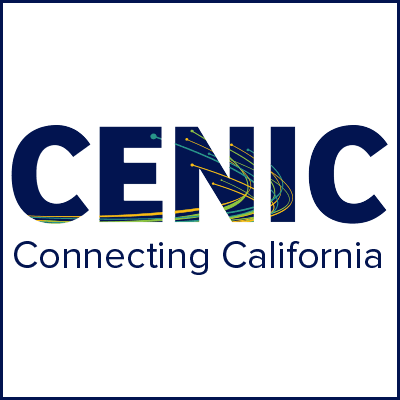- About
- Network
- Community
- Initiatives
- News
- Events
- Blog
- Publications

Broadband and California's Future: CPUC's Catherine J. K. Sandoval Keynote Address
Categories Healthcare K-12 RENS & NRENS
In her Tuesday Keynote Address, California Public Utilities Commissioner Catherine J. K. Sandoval laid clear the ways in which the health of California itself relied on access to all public utilities, with particular attention of course paid to broadband. Sandoval’s address further called attention to the ways in which broadband access must be viewed not merely as connectivity to buildings and campuses but to people and communities, and how it does not merely connect individuals Californians to resources but also to one another, thus creating a stronger society that can respond to the diverse challenges facing us all in the 21st century. After presenting an overview of the need for broadband and how it can make the impossible possible, she then described what it meant to pursue connectivity in terms of communities as opposed to buildings and campuses, and concluded with what could be done in the present to ensure the connectivity that California needs to move into the future.
Commissioner Sandoval’s own modest beginnings have enabled her to understand perhaps more profoundly the urgency of both urban and rural broadband access, as her parents were both originally of working-class rural origins before moving to Los Angeles to avail themselves of the opportunities of urban life. Thus, she has a close awareness of the challenges of both areas – urban, where cost can stymie any family’s desire to obtain the fast home Internet access needed for them and their children to research health decisions and engage in 24-hour learning, and rural, where Internet access may simply not even exist or consist of spotty and prohibitively expensive satellite access.
She called attention to the following illuminating facts:
- California is home to three of the top ten cities in the United States by population: Los Angeles, San Diego, and San Jose. However,
- California also contains 10% of the rural population of the entire United States.
- Only 5% of the California landmass can be considered urban (a significant concern for organizations like CENIC that pursue complete connectivity from the Mexican to the Oregon border, and from the coast to the inland deserts).
Taken together, these facts indicate both the magnitude of the challenge to providing broadband access throughout the state in addition to the vital importance to the state and nation of doing so.
To illustrate the challenges that arise when such access is not available, Commissioner Sandoval introduced attendees to the town of Orleans, CA located in Humboldt County and the home of the Karuk (among others) tribe of Native Americans – and also a place that exists free of both cellphone service and cable access. (Sandoval also characterized the town as “arm-wrestling for the worst telephone service in the state” with another small town in Trinity County, Hyampom.)
The town of fewer than 1,000 people possesses a school and some public services but no broadband access whatsoever. While the CPUC was pleased to award a CA Advanced Services Fund (CASF) grant to the tribe to establish a high-speed Internet network, the town is currently laboring under far less ideal circumstances, where children must be bussed for 2 hours one way to the Humboldt County Office of Education to participate in the K-12 online testing and assessments mandated by California. (Sandoval pointed out that on a bad day, the 2-hour one-way trip time could become no trip at all, what with the area’s tendency to rockslides. She also reminded attendees of the traffic concerns that created similar round-trip times in poorly served urban areas.) Not only must the children in such areas travel for long periods of time to take the online evaluations, but they have no wireless or other broadband access at home that would enable them to prepare for the tests beforehand in a thorough way.
Sandoval then moved into the possibilities for the state and its citizens with high-speed broadband access, beginning with the urgency of documenting access gaps – areas with particularly low or nonexistent coverage – in addition to ground truth of carriers’ claims of coverage in challenging areas. To this end, she introduced the audience to the CPUC’s CalSPEED app for Android, soon to be available on Apple devices as well. With it, testing can be done on four major service metrics (upload and download speeds, latency, and jitter) and satellite access as well, enabling the CPUC and others to obtain boots-on-the-ground verification of the kinds of Internet access that Californians really have and thus a better idea of where to direct investment.
The applications for this gap documentation extend to enabling farmers to plan real-time water management – a pressing concern in California – with Internet-enabled farms and not just Internet-enabled farmhouses, in addition of course to management of fire and water emergencies in the state. Sandoval reminded the audience that such applications relied on GIS data, which can involve enormous files that cannot be shared over any but a broadband connection. She also pointed out that many of the areas with low or nonexistent broadband access were exactly the same areas most at risk from wildfires, where thousands of lives and billions of dollars of damage mitigation depend on the real-time management of GIS data by first responders.
The example she used to demonstrate the importance of this kind of access for remote, rural areas to the state was the central office in the small town of Hornitos, CA – a former Wells Fargo stagecoach stop and now a tiny, picturesque hamlet. While being shown through the central office – the only central office Commissioner Sandoval has ever seen “that had boar’s heads on the wall” – two connections were pointed out to her amidst the cabling and racks: a CalFire connection, and another connection to the New Exchequer Dam, both of which played crucial roles in the battle against the enormous 2013 Rim Fire, which cost more than $127 million to fight, consumed a quarter of a million acres in addition to residences and commercial buildings, and put out as much greenhouse gas as a coal-fired power plant running for three and a half years. (Despite the clear significance of broadband connectivity for small towns like Hornitos to all of California, the administrative overhead of applying for CASF funds to cover the costs was onerous enough to the town that they were unable to do so.)
Commissioner Sandoval’s mission extends to all California utilities however, not just broadband, and she also pointed out the problems of leaving homes unconnected to commercial power which must use diesel generators at night, thus contributing to the poor air quality in unconnected rural areas and cities nearby.
After outlining this crucial role that broadband access for rural areas plays for the state as an interconnected entity, Commissioner Sandoval then extended the premise of unanticipated interdependencies to encompass the idea of connecting not structures – buildings or campuses – but entire communities, and that this represented a paradigm shift for the way in which broadband access is currently mandated by many funding agencies. She used the example of the flipped classroom as an application which sounded solid in theory but rapidly became less useful due to the fact that broadband connectivity is often supplied to campuses or buildings with constraints in place that require that it not be shared beyond the boundaries of the campus or building. Flipping a classroom, she pointed out, assumes good connectivity at home – making home connectivity and educational connectivity one and the same if distance education is to fulfill its promise. Without this home access for students, faculty, and staff, “you’re going to have to adapt your curriculum to the lowest common Internet denominator, which is going to be the lowest speed you can expect [students] to have at home.”
Confining connectivity to the campus also impacts students’ graduation and attendance rates as well by forcing them to come to campus to attend classes, spend surprising amounts of time parking, and wait for years to take required classes since many older schools buildings were not made to support today’s class sizes. In some cases, fire marshals have even had to be notified when class sizes exceeded what a given building was designed to support safely.
Other impacts arise when school districts investigate making iPads or other mobile technology freely available to their students, who may find the technology useless off campus if they have no wireless access at home.
In terms of concrete actions that can be taken now to enable California to move into a broadband-powered future, Commissioner Sandoval highlighted the following:
- Downloading and running the CalSPEED app to aid the CPUC in identifying broadband access gaps and determining where and how its investments should be made.
- Revising the traditional definitions for un- and underserved broadband areas. Currently, as Sandoval testified during an FCC hearing recently, the definitions are as follows, and badly outdated:
- Unserved: Less than 4 Mbps download, and 1 Mbps upload
- Underserved: Less than 6 Mbps download, and 1 Mbps upload
- As she observed during the hearing, many of the applications that the FCC supports such as telemedicine and distance learning are absolutely impossible with such access speeds. In January, the CPUC definition was raised to 10 Mbps down and 1 Mbps up for rural areas, and 20 Mbps down and 1 Mbps up in general. The Commissioner supports raising this to 25 Mbps down and 1 Mbps up for the purposes of grant programs, with priority given to areas with slower access.
- The use of CASF loan funds for broadband consortia. “When I first started working on Internet policy,” she remarked, “I had to tell people what the Internet was. We are past that point,” but broadband consortia continue to play a vital role in informing people in better-connected areas of the state and importance of connectivity for remote and rural Californians as well.
- The building of layered GIS data for wildfire first responders, with layers existing for wind and lightning. She further described the use of cellphone brigades during battles against wildfires, where certain personnel must be designated to drive beyond the areas of poor to no coverage in order to share real-time firefighting information – a practice that clearly must be rendered unnecessary as soon as possible.
- Evaluating programs that limit spending to a building or a campus to determine how they can be changed to support instead connectivity for entire communities. Many times when a community pursues connectivity for local anchor institution, the contracts may even prohibit the use of the connectivity beyond the institution’s boundaries. This creates situations like the one that Sandoval described in Humboldt County, where a large fiber connection enters the Humboldt State University campus and cannot be utilized by anyone else – thus inhibiting the campus’s teaching and learning mission.
Commissioner Sandoval then finished by exhorting the attendees to remember that it is only by connecting communities that we can hope connect California to the future.
Related blog posts
Network Traffic Analysis Shows Changing Activity Patterns During COVID-19 Pandemic
Even as campuses, schools, libraries, and cultural institutions have closed amid stay-at-home orders, CENIC’s networks have remained a vital part of the Internet ecosystem for online learning and community engagement, remote access to research data and specialized computing facilities, academic medicine and clinical care, and work-from-home operations.
PRP Boosts Inter-Campus Collaboration on Brain Research
Neuroscience researchers at the University of California Santa Cruz, University of California San Francisco, and Washington University in St. Louis use the cloud-scale Pacific Research Platform and National Research Platform to share and compute massive open-source datasets, accelerating experiment times from weeks to mere hours.


